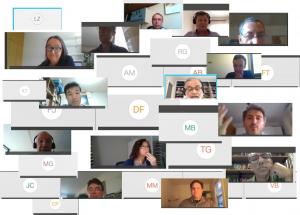The meeting covered all aspects of disruptions: their consequences, their prediction and avoidance, and—as a last resort—their mitigation. The aim was to summarize the present knowledge, to identify shortcomings, and to discuss possible R&D that addresses these.
In tokamaks of the size of ITER, the consequences of plasma disruptions can strongly reduce the lifetime of components. Avoidance and mitigation of disruptions are therefore keys to a successful and timely execution of the
ITER Research Plan. The ITER
plasma control system for the first experimental campaigns will be developed starting next year and disruption avoidance will be given special attention when designing control schemes. The disruption mitigation system of ITER is presently designed and the Disruption Mitigation Task Force is working intensively on the design specifications and the development of key components of the system. The IAEA Technical Meeting was therefore a timely contribution to a coordinated international effort to improve our understanding of how to avoid and mitigate disruptions in ITER.
As is becoming standard in these times, the meeting was held virtually. This format does not only come with restrictions, it also offers opportunities. The program committee decided to have all 61 contributions recorded as videos by the presenters one week in advance. The meeting webpage prepared by Matteo Barbarino, the Scientific Secretary of the meeting (IAEA), gave easy access to all contributions and allowed the participants to listen at times comfortable in their time zones and to exchange online about the content. Therefore everyone was well prepared for the live discussion during the actual meeting. Also the virtual coffee breaks, though not fully replacing the personal interaction as we know it from real meetings and conferences, were well received. In the end, the choice of the format resulted in a unique database of high quality presentation videos, openly accessible in about two weeks to everyone working in this field.


